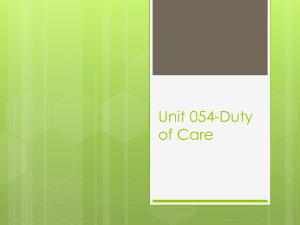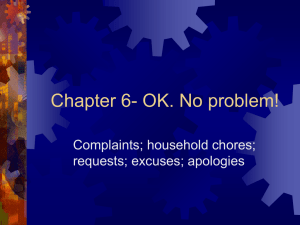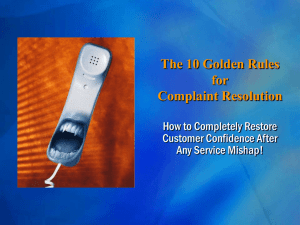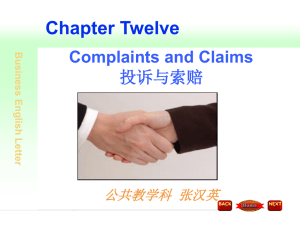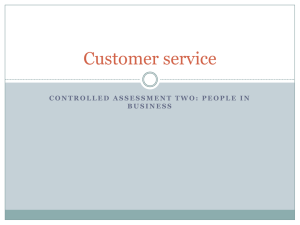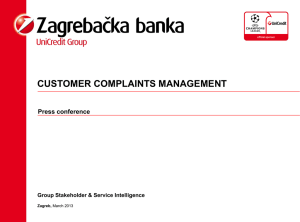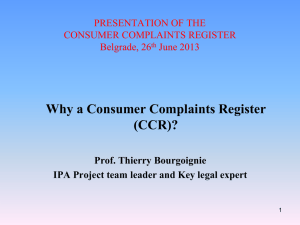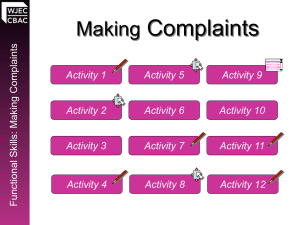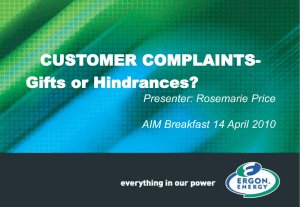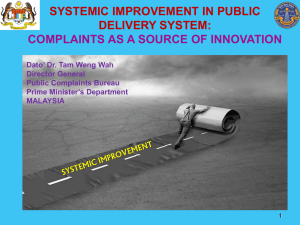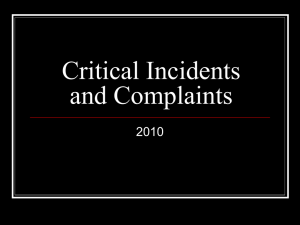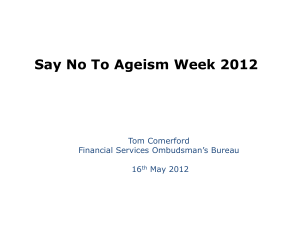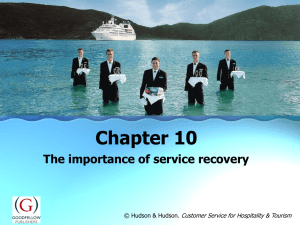Principle 7 - Center for Financial Inclusion blog
advertisement
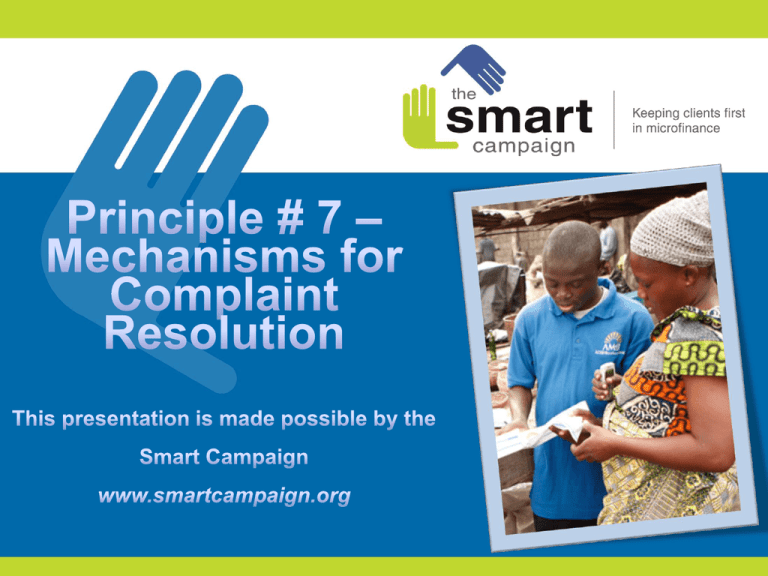
Agenda 1. Client protection principles 2. Principle #7 in practice 3. The client perspective 4. Participant feedback 5. Tools for improving practice 6. Conclusion and call to action 2 Client Protection Principles 1. Appropriate product design and delivery 2. Prevention of over-indebtedness 3. Transparency 4. Responsible pricing 5. Fair and respectful treatment of clients 6. Privacy of client data 7. Mechanisms for complaint resolution 3 Agenda 1. Client protection principles 2. Principle #7 in practice 3. The client perspective 4. Participant feedback 5. Tools for improving practice 6. Conclusion and call to action 4 Mechanism for Complaints Resolution The Principle in Practice: Providers have a mechanism for collecting, responding in a timely manner, and resolving problems for customers. The mechanism is used to resolve individual complaints and improve products/services. Consider this: Suggestions boxes are not effective for responding to specific problems in a timely way. 5 The Principle in Practice Set a complaints policy A written policy requires customer complaints to be taken seriously, fully investigated and resolved in a timely manner without bias. Actively use a mechanism Put in place a mechanism to handle customer complaints, dedicate staff resources to it, and ensure that it is actively used. Train staff Train staff to handle complaints and refer them to the appropriate person for investigation and resolution. 6 The Principle in Practice Inform clients Monitor the system Use the information Inform clients of their right to complain and how to submit a complaint to the appropriate person. Use internal audit or another monitoring system to check that complaints are resolved satisfactorily. Use complaints information is to improve products, sales techniques, and other interactions with clients. Use it to correct mistakes that may be harmful to other clients. 7 Examples of complaint mechanisms Email the MacroDreams Customer Response Department: customers@md.info Call the MacroDreams Customer Response Line: 555-555-555 Send an SMS to the MacroDreams Customer Response Line: 555-555-555 Leave a comment card in the Suggestion Box at your local branch Visit a Customer Service Desk. Call for locations: 555-555-555 8 Good Practice: Using Multiple Complaints Channels Good practice: Assess the complexity and urgency of the complaint then use an appropriate mechanism. Branch Teller Suggestion/ Complaint on-site Branch Manager Written suggestion / complaint Immediately Up to 14 days 9 Source: Adapted from Banco Solidario Suggestion/ Complaint Complaints via Agent feedback mechanism Agenda 1. Client protection principles 2. Principle #7 in practice 3. The client perspective 4. Participant feedback 5. Tools for improving practice 6. Conclusion and call to action 10 How Dissatisfied Clients Affect the Institution A very satisfied client will talk about his/her experiences with 3-4 people, but a dissatisfied client will tell 8-9 people. When a client’s complaints are received, answered, and solved, there is a 90% chance that s/he will return to the institution. 90% of dissatisfied clients whose problems are not resolved will never return to do business with the institution again. 11 No Complaints Completely Satisfied Customers If your institution does not receive concerns or complaints, be careful: • Clients could be happy with your products and customer service, or • Clients might not feel empowered to share their concerns and complaints or • They might not know how to do so, or 12 • Clients might not feel like they can complain without this affecting their business relationship with the institution. Agenda 1. Client protection principles 2. Principle #7 in practice 3. The client perspective 4. Participant feedback 5. Tools for improving practice 6. Conclusion and call to action 13 Feedback from Participants What channels does your institution use to receive, respond to, and resolve complaints? Do clients take the opportunity to give their feedback? What complaints or suggestions have you received at your institution? How did your institution respond? Has the complaints management system evolved at your institution since you began working there? 14 Agenda 1. Client protection principles 2. Principle #7 in practice 3. The client perspective 4. Participant feedback 5. Tools for improving practice 6. Conclusion and call to action 15 Tools available from the Smart Campaign Technical Tools Getting Started Questionnaire: Self Assessment for MFIs Smart Lending Smart Savings Technical Guide for Investors Samples and Case Studies Complaints Analysis Spreadsheet from FMMB Complaints Handling Brochure for Clients from OBS Complaints Handling Manual from FONDESURCO Complaints Handling Manual from Tamweelcom Client Welcome Kit 16 Agenda 1. Client protection principles 2. Principle #7 in practice 3. The client perspective 4. Participant feedback 5. Tools for improving practice 6. Conclusion and call to action 17 Conclusion Financial institutions can adopt this principle by having a mechanism for collecting, responding to, and resolving problems for customers. By adopting this principle, financial institutions can attract and retain clients and build a positive, trustworthy image. The Smart Campaign offers tools to help providers create/ improve a mechanism for complaint resolution. Call to Action: What “next steps” can your institution take to institutionalize and/or improve a mechanism for redress of client grievances? 18 Thank you! Endorse the Smart Campaign. Visit www.smartcampaign.org What’s next? Sign up to receive news and information. Download the Getting Started Questionnaire and conduct a client protection self-assessment. Email us! comments@smartcampaign.org 19
